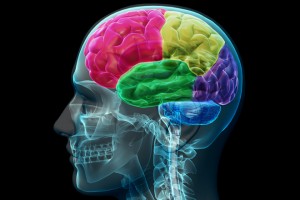Do you have a big imagination? Did you have an imaginary friend as a child? Or are you almost always daydreaming? If you ever wondered about where you get all those ideas/imagery from, then wonder no more. Your question has been recently answered by a group of scientists. In their paper, lead author Alex Schlegel and his colleagues explain that the previously theorized widespread neural network required for human imagination is actually real. Schlegel and his team found evidence for what they called a “mental workspace”.
The study was done using Functional Magnetic Resonance Imaging (fMRI), and was conducted on a sample of 15 individuals. The researched group was asked to imagine visual shapes, combine and dismantle them. The study revealed that a cortical and subcortical network –termed the mental workspace- is responsible for such ability to create mental images.
Schlegel stated that such a discovery moves us closer to understanding how our brains’ organization distinguishes us from other species and gives us the ability to think freely and creatively.
“We saw differences in activity all over the brain when we compared to control conditions. It does seem rather than being a single area responsible for imagining or manipulating, it seems like lots of areas have to work in concert”.
“Understanding these differences will give us insight into where human creativity comes from and possibly allow us to recreate those same creative processes in machines” said Schlegel.
Such findings open a huge doorway in the world of complex robotics; can we create robots with a similar workspace which allows room for possible independent problem solving skills, or even a certain level of “creativity”?
As for humans, a study like this makes one wonder about this mental work-space’s functioning in different populations. New research should be dedicated to studying this neural network in people living with Autistic Spectrum Disorder (ASD), who are known to face difficulty understanding abstract pieces of information, or to imagine things that they do not see. Is this work-space underactive in people with ASD? And is it overactive in people with psychiatric disorders associated with visual hallucinations or delusions (e.g. schizophrenia). Can we create neural rehabilitation approaches to target one of the main difficulties faced by these groups.
Efforts need to be directed towards establishing a better understanding of the human mental workspace and its functioning and activity level in people living with relative difficulties, which might ultimately build grounds for hope to better treat and approach such dysfunctions.




